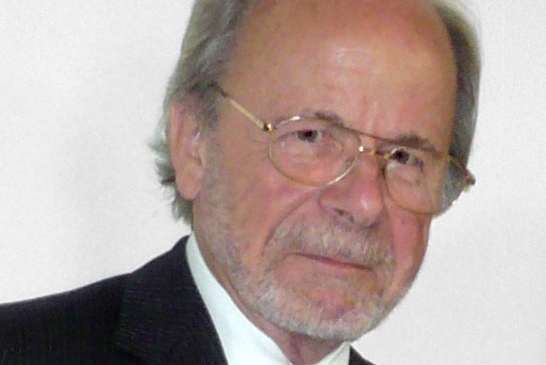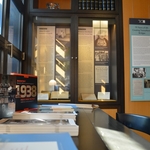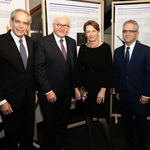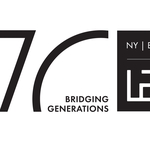“Erhard Roy Wiehn— Wer schreibt, der bleibt!”

- Author
- David Brown
- Date
- Fri, Jul 18, 2014
Erhard Roy Wiehn, born 1937 in Saarbrücken, is a Professor Emeritus of Sociology at the University of Constance who has edited one of the largest series of monographs about Jewish life in Europe. His “Edition Schoah und Judaica” now encompasses nearly 280 books, mostly autobiographical accounts of Jewish life in Europe before, during, and after the Holocaust. We spoke to him about memory, authenticity, and obsession.
How did you first become interested in this topic?
Early after WWII, I was a very active little Boy Scout in the German scouting organization called the Pfadfinder. Two sisters by the name of Schwarzschild volunteered to lead the youngest scouts, the Wölflinge (Wolf Cubs), and they sometimes came to our home for scout meetings. They had survived the Gurs Internment camp in France, and I learned a lot about their experience. That planted certain seeds in my mind that would bear fruit years later, and the early 1980s was the right time in the development of my academic career to make this topic my focus.
You were trained as a sociologist. What is the relationship between sociology and your work on the Holocaust?
My earliest topic was social inequality. I wrestled with the early social philosophers, from Aristotle to Plato and on to Karl Marx and many others, following the thread of inequality. Of course, the same thread can easily lead to the Shoah, which is the most extreme example of unequal treatment one can imagine.
How did your first publications come about?
In the early 1980s, I had a close relationship with the Jewish community of Constance. The chairman was a survivor from Warsaw, and there were many other Polish families in the community. In 1983, they received an invitation to travel to Poland for the 40th anniversary of the Warsaw Ghetto uprising. I became involved early on and actually persuaded many of them to participate; they had never wanted to return to Poland. I was able to interview most of the participants during the trip, and those interviews became our first book, Kaddisch - Totengebet in Polen. The ball got rolling very quickly especially thanks to word of mouth among what you might call the Landsmannschaften, or communities of Jewish immigrants from specific regions. German-language publications like the Stimme of the Bukovina Jews or the Israel Nachrichten published reviews of our books, and word got around.
When did it become clear that you had taken on a task that you would never finish, but which you could also not stop?
I was always a bit ambivalent. On the one hand, you have to slog through each new manuscript and all the individual fates that it contains. Then you say, “Okay, we did it! One person fewer will be forgotten.” On the other hand it’s clear that it’s no more than a drop in the ocean. The longer you do this, however, the more it becomes an obsession. It’s worth struggling through the manuscript and printing it, because then it’s preserved.
What are some examples of stories that affected you deeply?
That could take all evening, and many of the authors have become cherished friends. To name a recent example, though, we published a book by Herman Abraham called Unter rotem Nordlicht. He was a Romanian Jew who just barely survived the Romanians and the Germans. Then he joined the Red Army to fight the Germans, but he was accused of spying for the Romanians, or even the Germans. He was sentenced to years of hard labor in the Vorkuta Gulag. In his final years, he emigrated to Israel and wrote this book, which has an aura that can absolutely be compared to Solzhenitsyn. I’ll name an early example as well. Zwi Helmut Steinitz wrote Durch Zufall im Holocaust gerettet, which tells the unbelievable fate of his family from Posen. After the Nazi occupation, his parents were sent to Bełżec, where the first extreme murders using poison gas took place. Steinitz himself was spared, because during the selection he happened to switch lines. After 1948, he emigrated very early to Israel, where he cobbled together, with virtually zero experience, a career in the flower industry. He became a pioneer for the export of Israeli roses to Holland.
Are there manuscripts that you choose not to publish?
Yes. It is our foremost priority to ensure that the stories are authentic and from credible authors. Sometimes there are problems because, after so many years, memories become clouded. For example, there was a man in America, originally from Frankfurt, who escaped early and then returned with the American troops as a liberator. He wrote that he had arrived at Buchenwald with Patton’s army and seen the famous inscription over the gate, “Arbeit macht frei.” I wrote him back, “I’m sorry, but you are mistaken. That was Auschwitz. Buchenwald’s motto was ‘Jedem das Seine.’” He became angry, but I told him that if he insisted, then he could find another publisher. We will not publish something that is not credible, even if it’s only a single line.
Is it difficult for the authors to write these books?
Absolutely. Take Zwi Steinitz from Posen. He had repressed it all his life. When his oldest child asked him, “Father, what’s that number on your arm?” he would make up a story—that it was a telephone number he didn’t want to forget or something. It wasn’t until he retired that he fell into a deep pit, so to speak, and everything came back to him. He sought psychological counseling, and only then did he begin to write. Some authors also realize when they sit down to write that their German is a bit rusty. That does not stop many from writing books of excellent literary quality. We published one book by a Croatian author who served as a doctor in Tito’s partisan army and much later became a professor of medicine in Switzerland. He wrote his book in a sort of German—let’s just say that it was 1000 percent better than my Croatian, but I don’t speak any Croatian! Editing the book was an arduous process, but in the end it won the literature prize of the City of Bern. The author identified so closely with the final version of the book that he didn’t even remember what the original looked like!
The generation that experienced the Holocaust as children will soon be gone. What does that mean for your work?
We just celebrated the 101st birthday of our oldest author, Gretel Baum-Merom, together with her in Haifa in February. Even our youngest authors are all past their mid-80s. However, the second generation is now bringing us their parents’ texts. Or, descendants often donate their parents’ materials to institutions like LBI or Yad Vashem, where they are saved until someone finds them and does something with them. In recent years, I’ve been working through things as quickly as possible while the authors are still alive. Once the author is gone, it is so much harder. There are questions that no one can answer.
How do you hope this resource gets used?
There a large body of comparable material, but there is hardly another single edition of this scope, breadth, and structure. I think that we have succeeded, with more luck than strategy, in making a contribution to what I see as the sociology of the 20th century for the 21st century. I hope that it can continue a while longer. I’ve been retired for a few years now, and I’m able to work about nine to ten hours a day on these texts, a bit less on the weekends. I think that’s the best way to spend my precious time.
Nine to ten hours a day! Where do you find the energy?
One factor is the awareness that one really can do something against forgetting. With every page you edit, you have done something against forgetting. As the German saying goes, “Wer schreibt, der bleibt”—whoever writes, remains!




